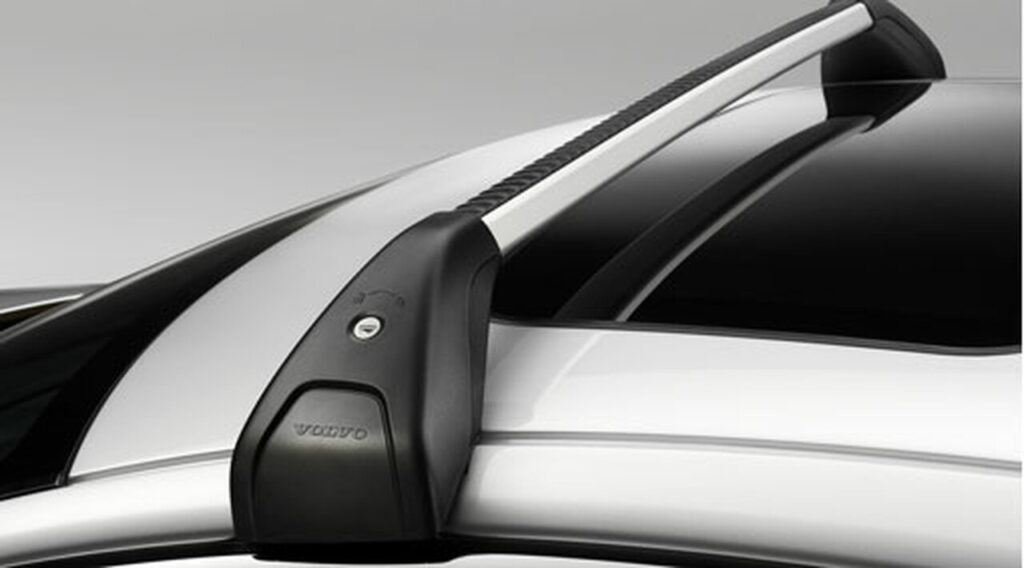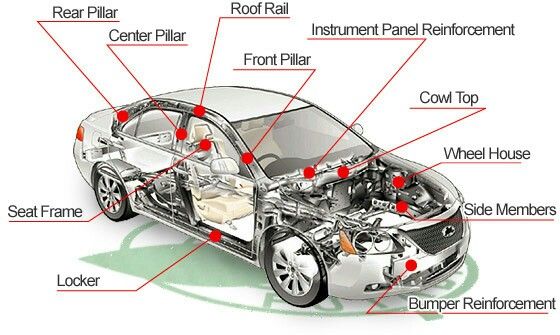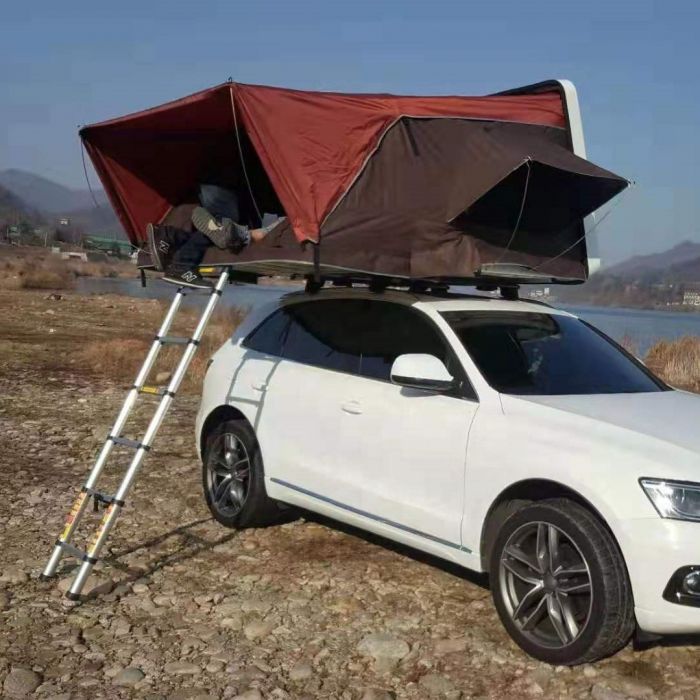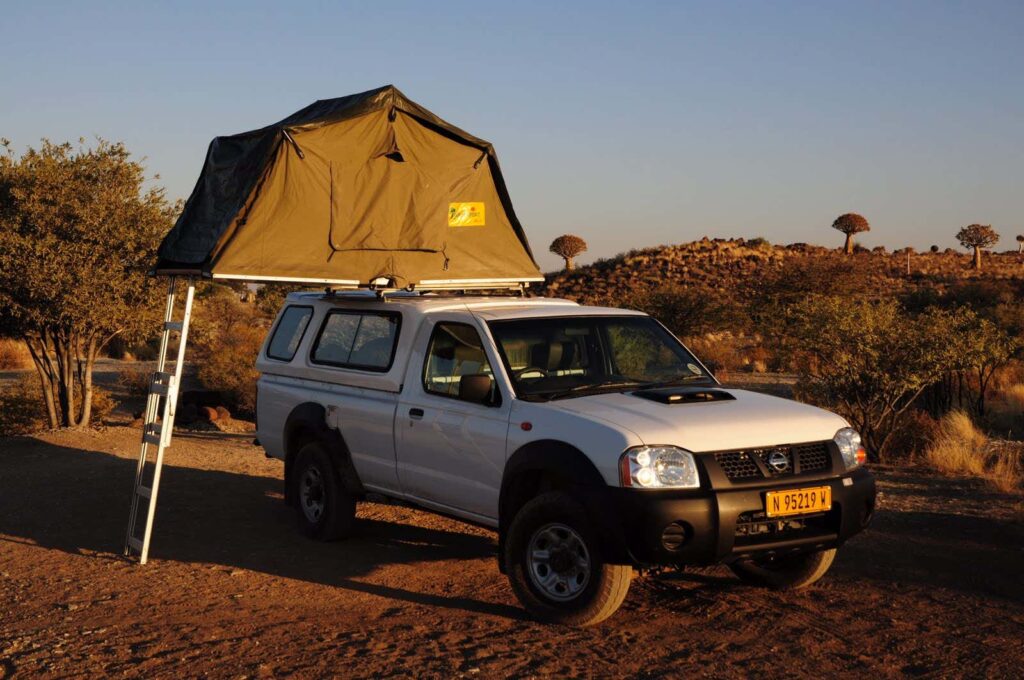Table of Contents
Roof top tents and the permissible roof load
The most frequently discussed topic with newcomers is definitely the question of the roof load. No topic raises uncertainty anymore, and there is almost no one who has not asked themselves these questions at the beginning:
- Can my roof take it?
- How much can my car even carry?
- My manual says 165 lbs permissible roof load. The roof top tent weighs 154 lbs with the straps. I weigh 220 pounds, my wife 154 pounds and the children together 132 pounds: How is that supposed to work?
No wonder that there is a need for clarification here. Because in normal everyday life you rarely get around to loading the roof of your car with heavy loads, let alone walking around on it. Everyone has seen bikes on the roof before. Every now and then a craftsman transports a ladder or his equipment on the roof. But fully loaded car roofs are more familiar from the 4 × 4 sector or from pictures of African or Indian coaches. So how is that exactly?
Can i or i can’t?
To get it straight from the start: You Can. Your car roof is able to carry a multiple of the weight of the approved roof load – but only when stationary.
And that is the important point: apart from a few dynamic movements that you may occasionally perform in the roof top tent, a roof top tent with sleeping people is a static load on the vehicle. The car stands firmly on its four wheels. The family of four who previously sat in the car now sleeps on the car. Nothing has changed in terms of the total mass.
But how is that possible? Doesn’t the roof of the car indent when the roof is heavily loaded?
Sure, if I climb onto my car and stand in the middle of my roof, I will leave significant footprints on most car roofs. Depending on my weight and motivation, I will certainly be able to push the roof through when I hop on it.
But: the weight of the roof top tent is neither on one point nor in the middle of the car roof.
A roof tent is always mounted on cross bars / roof racks that are suitable for your car or on a suitable (luggage) frame. Each car has its own cross member, either from the manufacturer itself or from a third party. These are the same carriers that you can use to transport bicycles.
In the simplest case, the car roof racks consist of a stable aluminum or steel profile that is provided with feet at both ends. Correctly selected, the feet will fit your car brand and model exactly. If your car has a railing, the feet encircle the railing. If you don’t have one, they sit directly on the roof rails of your vehicle and are fixed there.

Imagine that your roof top tent is lying flat on the straps. The load of the roof tent and the occupants is initially distributed over 2 girders and from there on a total of 4 feet. Of the 660 pounds of the family of four (see above), each of the 4 feet in theory only carries 165 pounds on average.
By the way: If you want, you can also mount your roof top tent on 3 or 4 supports. This will distribute the loads even further over up to 8 feet.
The technology: every roof is framed
Regardless of whether you mount the car roof rack on a car with or without a railing: the load is always directed into the frame of the vehicle. The frame of the car is the reinforced part of the body. You can imagine it like a skeleton or a cage that also encloses the passenger compartment.
The entire roof is also framed by a frame – the so-called roof arches (across) or roof rails / roof spars (lengthways). This in turn rests on the so-called vehicle pillars. For cars these are the A, B and C pillars, for vans and station wagons there is also a 4th pillar, the D pillar.

The body frame consists of multiple folded and reinforced steel profiles. These are designed precisely to absorb all dynamic and static forces. They are distributed on the body in such a way that the occupants in the car are optimally protected – even in the event of an accident.
Imagine if your car overturned in the event of a driving error or a collision and landed on the roof. The body is designed to be so rigid that it keeps the interior in shape as much as possible. The body is never crushed by the static weight of the vehicle. This requires significantly more dynamic forces (falling from a great height) or external influence (car press).

Then why is there a roof load limit at all?
You now know that your car can carry you and other people with a roof top tent. Nevertheless, you should not completely disregard the roof load. The permissible roof load is limited by the manufacturer so
- On the one hand, the dynamic forces occurring when driving do not lead to overloading of the body and
- On the other hand, the driving characteristics of the car are not negatively affected.
Every additional weight experiences so-called g-forces due to the laws of physics when driving, accelerating, braking and cornering. Like a Formula 1 racing driver who is pressed into the seat while accelerating his vehicle, each load of a vehicle, depending on the strength of the acceleration, sometimes has a multiple of its own weight.
An example: a child’s swing can hold up to 2.5 g. This means that the forces that occur ensure that the child feels 2.5 times its own weight when rocking. Put simply, the 44 pound child suddenly weighs 110 pounds. The nice side effect: We humans even enjoy this feeling to a certain extent (e.g. on the roller coaster = 4 g).

154 pounds in motion
In relation to your roof tent this means: The 154 pounds of the roof top tent do not only work downwards on the roof rack and the body due to the weight of the tent itself. The acceleration forces that occur are much more interesting. Depending on the driving dynamics, these cause loads to the front (braking), rear (accelerating) and to the side (cornering). Yes, forces even act upwards and downwards, namely the vertical forces which, depending on the condition of the road, are transmitted through the chassis to the roof.
This applies in particular to off-road drivers who drive off-road. But even on normal road surfaces, potholes and bumps can cause considerable vertical acceleration. These acceleration forces can sometimes be a multiple of your own weight for a short time. Both the cross member and the entire body must be designed for this.
Also not to be underestimated are the forces that are generated by the wind and turbulence. They occur around the roof top tent. Depending on:
- Dimensions and aerodynamics of the packed tent
- Rigidity of the tent floor
- Distance between the cross members
the airstream can generate significant vibrations that can even be felt inside the vehicle.
TIP 1: Place the cross bars as far apart as possible and position the tent evenly on the cross bars. Each carrier should have the same distance to the edge of the tent in order to ensure an even load distribution.
TIP 2: Due to the high forces that occur, you have to regularly check whether all screws of the connections are still properly tightened. The screws can loosen quickly due to the high dynamic forces and the vibrations.
The roof load increases the center of gravity
In addition, with all roof top tents, the transport of the additional weight on the roof shifts the center of gravity of the car upwards. Some cars can even tip over when cornering quickly because they simply overturned in the bends due to their high center of gravity.
In order to prevent this from happening and to ensure the overall stability and functionality of the vehicle while driving, the automobile manufacturers limit the roof load.
Fortunately, most rooftop tents (100-176 lbs) weigh in the range of the allowable roof load (110-330 lbs). Together with the cross members, your roof tent should not exceed the permissible roof load.

What can your cross bars do?
An important point that should not be underestimated is the permissible load of the cross members. This is usually in the range of the permissible roof load of the vehicle (165 – 330 lbs). That means: you wear your roof top tent loosely. Here, too, the following applies: When standing, they can usually take off a lot more. That’s why you don’t have to worry about everyday camping on the roof.
It is much more important that you do not exceed the permissible load of the cross member while driving. Because acceleration and braking maneuvers as well as cornering and the above-mentioned vertical forces also act on the carrier (and especially on the connections to the feet) shear, tensile and compressive forces that the material has to withstand. Every pound more also means that the dynamic forces acting on the screw connections and clamping devices increase.
What can your railing do?
Although one would think that the railing is a functional element that is designed to be stable, it is degenerating more and more into a decorative strip in more modern vehicles. Often it is very simple (because it is cheaper and lighter).
Some roof top tent campers report that the railing of their vehicle bends under load (e.g. VW Touran II from 2015). If the distance between the cross members is too narrow, this can lead to the feet of the roof rack touching the roof and possibly even denting. To make sure this doesn’t happen to you, just do the following test:
Climb over the front tire and the A-pillar onto the roof rail of your car (at your own risk). Place one foot on the railing and gently put your weight on it. Important: When doing this, really only move on the frame of your vehicle, otherwise you run the risk of denting your sheet metal. If the railing does not give in or gives only a little, it has passed the test. In everyday operation, the railing will never have to bear such a high point load.
TIP 3: When assembling, make sure to position the two cross members on the railing so that they sit as close as possible to the connection points to the body. This will reduce the load on the free-standing part of the railing and prevent it from sagging.
What does that mean in practice?
The experience of many roof top tent campers shows that it basically doesn’t matter to drive around with a few more pounds on the roof. Please only be aware that in an insured event, an exceeded roof load can lead to exclusion of liability.
By the way: vehicle manufacturers do not officially differentiate between a dynamic and a static roof load. You can thus withdraw from the warranty and are not liable for damage caused by “overloading” when using the roof top tent (opening, walking on, sleeping).
The same applies to the manufacturers of car roof racks. However, there are also manufacturers here who officially release their cross members for the use of roof tents.
Overload and load securing
For the sake of completeness, it should also be mentioned that overloading a motor vehicle is punished: the higher the exceedance of the maximum permissible total weight, the higher the penalty will ultimately be. The roof load is to be added to the total weight of the vehicle. It remains questionable how and when a control of the roof load and the determination of the excess can be carried out in practice.
Inadequate load securing can also be punished. Make sure that your roof top tent is firmly connected to the car roof rack using the mounting plates and screws provided. The cross member and roof top tent must form a non-positive unit.
TIP 4: Check the connection by shaking the roof top tent vigorously with all your weight after assembly: push and pull so hard that the whole car moves with it. The roof top tent should neither lift off nor slide against the cross member.
TIP 5: Retighten both the screws on the mounting plates and the cross member after a few miles of driving.
Summary of the roof load
In summary, it can be said: As long as you are in the area with your properly assembled, loaded and ready-to-drive roof top tent
- the permissible roof load of the car
- the permissible total weight of the vehicle and
- the permissible load-bearing capacity of the cross members remains,
you won’t have any problems with the weight of your roof top tent or with the law.







